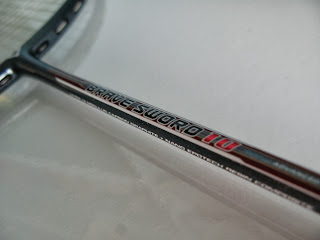Badminton (also called Shuttle badminton) is a racket sport, that can be played as a hobby, or to improve fitness, or played at a professional level. Its in fact an Olympic sport and is keenly contested at the Olympics.
If you really want to know what badminton is, and how exciting this racket sport can be, you should take some time out to watch professional badminton players playing the game. Since its a fast paced sport it tends to get the spectators full attention and interest. Its an entertaining game to watch, to say the very least.
What are the Basics of badminton play?
Though hobby players who play badminton for recreation, can pick up their rackets and play the game outdoors in parks or wherever they find the space, professional badminton is always played as an indoor game, on wooden flooring courts having specific dimensions. The game can be played by either 2 players contesting against each other, or by 2 pairs (2 players on each side) contesting against each other.
The objective in badminton is for players to hit the feathered shuttlecock in their opponents side of the court such that their opponent cannot return the shuttle back to them. (This is similar to other racket sports such as tennis or table tennis, except that instead of a ball, players hit a shuttle back and forth towards each other)
When an opponent fails to return a shuttle back, a point is won. 21 such points won wins the game. Each match has maximum 3 such games of 21 points each.
What are the skills are required to play Badminton?
For playing the game as a hobby, not much skills are required. It's quite easy to judge, time, and hit a shuttle that's flying through the air, to your opponent by hitting it with your racket. However if you intend to play the game professionally, then it requires a lot of training and effort.
A professional badminton player should have excellent technique, supreme fitness, and should also be mentally sharp so as to be able to outthink the opponent.
Badminton is a fast game. Very fast. In fact it is the fastest racket sport in the world in terms of shuttle speeds that are achieved immediately after impact with the racket.

What are the health benefits of badminton?
Badminton is a fast paced sport that involves a lot of aerobic activity such as running on the court, stretching to reach the shuttle and jumping in the air to hit the shuttlecock with your racket. Being such a streneous activity the health benefits that accrue from playing badminton are also tremendous.
Almost every muscle of the body gets exercised by playing the game, it is excellent for maintaining healthy body weight and keeps the body well toned.
If you have landed at this page searching for 'What is badminton' hope the above summarization of the sport, gives you a fair overview about the game. I suggest watching a professional game of badminton to fall in love with this beautiful game.
If you really want to know what badminton is, and how exciting this racket sport can be, you should take some time out to watch professional badminton players playing the game. Since its a fast paced sport it tends to get the spectators full attention and interest. Its an entertaining game to watch, to say the very least.
What are the Basics of badminton play?
Though hobby players who play badminton for recreation, can pick up their rackets and play the game outdoors in parks or wherever they find the space, professional badminton is always played as an indoor game, on wooden flooring courts having specific dimensions. The game can be played by either 2 players contesting against each other, or by 2 pairs (2 players on each side) contesting against each other.
The objective in badminton is for players to hit the feathered shuttlecock in their opponents side of the court such that their opponent cannot return the shuttle back to them. (This is similar to other racket sports such as tennis or table tennis, except that instead of a ball, players hit a shuttle back and forth towards each other)
When an opponent fails to return a shuttle back, a point is won. 21 such points won wins the game. Each match has maximum 3 such games of 21 points each.
What are the skills are required to play Badminton?
For playing the game as a hobby, not much skills are required. It's quite easy to judge, time, and hit a shuttle that's flying through the air, to your opponent by hitting it with your racket. However if you intend to play the game professionally, then it requires a lot of training and effort.
A professional badminton player should have excellent technique, supreme fitness, and should also be mentally sharp so as to be able to outthink the opponent.
Badminton is a fast game. Very fast. In fact it is the fastest racket sport in the world in terms of shuttle speeds that are achieved immediately after impact with the racket.

What are the health benefits of badminton?
Badminton is a fast paced sport that involves a lot of aerobic activity such as running on the court, stretching to reach the shuttle and jumping in the air to hit the shuttlecock with your racket. Being such a streneous activity the health benefits that accrue from playing badminton are also tremendous.
Almost every muscle of the body gets exercised by playing the game, it is excellent for maintaining healthy body weight and keeps the body well toned.
If you have landed at this page searching for 'What is badminton' hope the above summarization of the sport, gives you a fair overview about the game. I suggest watching a professional game of badminton to fall in love with this beautiful game.




































